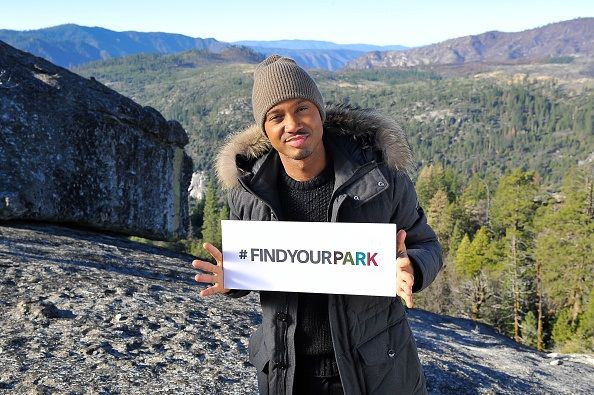National Park Service Taps Mobile Game, Social Media To Recruit Young Volunteers

WASHINGTON — For some, visiting a national park can be about putting away the smartphones and escaping to the outdoors. But for others — including the National Park Service rangers and coordinators — the smartphone is becoming an increasingly important part of the experience of contributing to the country’s protected areas.
Park volunteering is up by 80 percent year-over-year, from 246,000 volunteers in 2014 to 443,000 in 2015. Last year’s volunteer work totaled to 7.9 million hours, which is equivalent to more than 3,700 additional employees, according to the National Park Service. But the government agency is after even more support and especially looking to younger volunteers in 2016.
To reach new audiences, the National Park Foundation now touts a mobile app called “Save the Park,” funded by American Express and created by nonprofit Games for Change. Instead of simply listing information about a park's services — there are other apps for that — “Save the Park” is a mobile game, where players can choose from four characters to complete different volunteer activities, such as taking samples of soil, cataloging butterflies, putting up fliers and grooming trails.
The various activities reflect the diversity of volunteer opportunities, which may not be widely known. “Oftentimes people think about wilderness experiences, that in order to be a park ranger you have to know how to ride a horse, or in order to volunteer for the National Park Service you have to do trail work,” said Michael Liang, a park ranger. “This game represents the reality that there are so many ways to celebrate the national park and not all of them are in the wilderness.”
Liang would know. He studied art and design at the University of Michigan. Now, he works as a visual information specialist at the Santa Monica Mountains National Recreation Area. In that position, he creates multimedia projects and other online campaigns for visitors and advocates of the parks.

The “Save the Park” game took roles like that in mind. The character Andre is a 26-year-old graphic designer and long-time park volunteer who assists in guest services. There are roles “no matter interests," Liang said. "If you don’t like people and you like working with computers, we have jobs for that.”
Games for Change also added a junior ranger to every character. It adds more challenge to the game, said Susana Pollack, president of Games for Change, and it also is reflective of the actual experience of volunteering at a park. Volunteering isn’t just for older people, and people can work together on projects.
But the National Park Service is battling to steer a younger generation’s attention away from phones and other online activities. “They aren’t just competing with amusement parks anymore. They’re competing with interactive experiences, at-home entertainment systems,” said Meredith Hahn, vice president of corporate social responsibility at American Express.
American Express has made a $5 million commitment to help the U.S. Department of Interior. The amount includes a $250,000 grant to fund the creation of this game. Games for Change, launched in 2004, looks to educate an audience that loves virtual games about awareness issues. For instance, the organization has created games about dating, immigration, war, recycling and health.
The games, while single-player, can be shared on Facebook, Twitter and other social networks, in an effort to attract more players — and potential park volunteers. The National Park Service already benefits from social media: For instance, the Find Your Park/Encuentra Tu Parque movement has garnered hashtag enthusiasm during the last month.
Only 3 more days to go #FindYourPark during National Park Week! pic.twitter.com/U5kBAsUTj1
— Twitter Government (@gov) April 21, 2016
Happy National Park Week. Go #FindYourPark today. https://t.co/B00kPjS35Q pic.twitter.com/uTNnDkSw6O
— Barack Obama (@BarackObama) April 18, 2016
Happy #NationalParkWeek! This week, national parks are free across the country! Where will you go? #FindYourPark pic.twitter.com/gMCDVoHL68
— The White House (@WhiteHouse) April 18, 2016
I found my park! Find yours during National Park Week. #findyourpark pic.twitter.com/mzXU2PFIlT
— Ann☀️Matthiessen (@ann4usc) April 14, 2016
The Find Your Park movement has led to those age 18-23 being 10 percent more interested in volunteering with the National Park Service, according to a brand tracking study. Yet, just like any mobile app, the hype has the potential to fade.
The goal, set by the U.S. Department of Interior, is to increase volunteering to 1 million people per year by 2017. That would mean more than doubling the 2015 numbers. For Liang, he’s looking to the 17 million people who live within an hour drive from his park in Santa Monica, and their enthusiasm as documented in photos shared on social media.
“We’re seeing the public lead the way. They’re posting their experiences in social media so that experience is no longer solely just in the park boundaries,” Liang said. “We’re seeing the national park experience completely expand beyond the physical example of the park.”
© Copyright IBTimes 2024. All rights reserved.






















